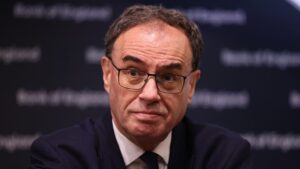The Future of U.K. Interest Rates: Insights from the Bank of England
Welcome to Extreme Investor Network, your go-to source for top-notch economic insights and investment strategies. Today, we’re diving deep into the recent statements made by Andrew Bailey, the Governor of the Bank of England, regarding interest rate cuts and their implications for the U.K. economy.
Potential Rate Cuts Ahead
In a compelling interview with the Financial Times, Bailey made it clear that the U.K. may be on the brink of significant monetary policy shifts, hinting at the possibility of four interest rate cuts over the next year if inflation continues to trend downward. This development has piqued the interest of economists and investors alike, as it could reshape the landscape of the British economy.
What to Expect
According to current market predictions, the Bank of England (BoE) is expected to hold the interest rates steady during its upcoming December meeting. However, analysts are closely watching the potential for three additional 25-basis-point rate reductions in 2024. These cuts would lower the key interest rate to approximately 3.75%, which would be a notable shift from the bank’s current stance.
Bailey emphasized the need for a “gradual” approach to these cuts, indicating that while the situation appears promising, the BoE must exercise caution. As he noted, “Monetary policy will need to remain restrictive for sufficiently long until the risks to inflation returning sustainably to the 2% target over the medium term have dissipated further.” This perspective is indicative of a cautious yet optimistic outlook for the U.K. economy.
Inflation Trends: Surprising Developments
Bailey remarked on the recent inflation data, stating that consumer prices have dropped quicker than anticipated. This positive trend stands in stark contrast to previous forecasts, where the expectation for inflation was approximately 1% higher than where it is today. In October, the inflation rate unexpectedly rose to 2.3%, a jump from 1.7% in September, creating a complex picture that investors must navigate.
This fluctuation in inflation rates could significantly impact consumer spending and overall economic health. At Extreme Investor Network, we believe that monitoring these trends is crucial for making informed investment decisions.
Sterling and the Gilt Market Reaction
In response to these developments, the British pound (Sterling) saw a slight dip, trading down 0.06% to around $1.2666. Meanwhile, the yield on the U.K.’s 10-year gilts remained stable at approximately 4.276%. Stability in the gilt market suggests that investors are weighing the potential for future rate cuts against broader economic indicators.
Conclusion: Navigating the Future
At Extreme Investor Network, we encourage our readers to keep a close eye on the Bank of England’s monetary policy adjustments, as they will have profound implications for both domestic and global markets. The potential for rate cuts, combined with the unpredictable nature of inflation, creates an environment filled with opportunities for savvy investors.
Stay informed and strategic as we watch these developments unfold. Our commitment is to provide you with cutting-edge insights that empower you to make the best investment choices for your portfolio. For more exclusive content and expert analysis, keep following Extreme Investor Network!

